Have you ever wondered if you could use your smartwatch for navigation without relying on your smartphone? Well, the answer is yes, but with some limitations and considerations. In this blog post, we will discuss the potential of smartwatches as standalone navigation devices and explore their benefits and drawbacks. Whether you are a hiker, cyclist, or just someone who wants to find their way around a new city, it’s important to know the capabilities and limitations of using a smartwatch for navigation.
Table of Contents
Key Takeaways:
- Stand-alone capabilities: Some smartwatches can be used for navigation independently, without the need for a smartphone connection.
- Features to look for: When considering a smartwatch for navigation, important features to look for include built-in GPS, offline maps, and a compass.
- Limitations: While some smartwatches offer stand-alone navigation, their capabilities may be more limited compared to using a smartphone for navigation.
Navigational Features of Smartwatches
While smartphones have become essential for navigating your way around, smartwatches are increasingly equipped with advanced navigational features that allow you to find your way without relying on a smartphone. In this chapter, we will explore the navigational capabilities of smartwatches and how they can be used independently for navigation.
GPS and Sensor Integration
Smartwatches are equipped with GPS and various sensors such as altimeters, accelerometers, and gyroscopes to accurately track your location and movement. The integration of these sensors allows your smartwatch to provide real-time navigation information, including precise location data and step-by-step directions. This integration ensures that you receive accurate and reliable navigation guidance, even when you’re away from your smartphone.
Maps and Directions: Built-in vs. Downloadable
Many smartwatches come with built-in maps and navigation apps, allowing you to access offline maps and directions directly from your wrist. Some models also allow you to download additional maps and navigation data for specific regions or activities. This flexibility enables you to access the necessary maps and directions without the need for a smartphone connection, making it ideal for outdoor activities or traveling in areas with limited connectivity.
Performance without Smartphone Connectivity
When using your smartwatch for navigation, you can expect it to perform seamlessly without the need for constant smartphone connectivity. The standalone navigation features of smartwatches ensure that you can rely on them for constant and accurate navigation guidance, even when your smartphone is out of reach or battery. This independence is particularly useful for outdoor enthusiasts and travelers who prefer to travel light and minimize reliance on their smartphones.
Reliability and Precision of Standalone Navigation
One of the crucial aspects of using a smartwatch for navigation is the reliability and precision of standalone navigation. Smartwatches are designed to provide accurate location data and directions, ensuring that you can navigate confidently without the need for a smartphone. The standalone navigation capabilities of smartwatches have been continuously improved to offer precise guidance, making them a reliable companion for your outdoor adventures or daily travels.
Factors Affecting Navigation on Smartwatches
Now that you are considering using a smartwatch for navigation, it’s important to take into account several factors that could impact its effectiveness. Here are some key considerations to keep in mind:
- Battery life and efficiency concerns
- Display size and resolution
- Limitations in bandwidth and cache
- Design and aesthetics impact on usability
Though these factors may impact the performance of navigation on your smartwatch, they can also provide insights into how to optimize the usage of navigation tools on your device.
Battery Life and Efficiency Concerns
When it comes to using your smartwatch for navigation, battery life and efficiency are crucial factors to consider. Constant use of GPS and navigation apps can drain your smartwatch’s battery quickly, potentially leaving you stranded without access to important navigation features when you need them the most. Ensuring that your smartwatch has a long-lasting battery and efficient power management is essential for a smooth navigation experience.
Display Size and Resolution
The display size and resolution of your smartwatch can significantly impact its suitability for navigation. A small, low-resolution display may make it difficult to read maps or view directions clearly, leading to potential confusion or misinterpretation of navigation instructions. A wider, high-resolution display can provide a more user-friendly navigation experience, allowing you to easily follow routes and locate points of interest without straining your eyes.
Limitations in Bandwidth and Cache
When using navigation on a smartwatch without a smartphone, limitations in bandwidth and cache can pose challenges. Without a constant connection to a smartphone’s data network, your smartwatch may experience delays in loading map data or updates, potentially causing disruptions in your navigation. Ensuring that your smartwatch has sufficient bandwidth and cache capacity for offline navigation can help mitigate these limitations.
Design and Aesthetics Impact on Usability
The design and aesthetics of your smartwatch can also impact its usability for navigation. A bulky, cumbersome design may hinder your ability to comfortably view navigation information on your wrist, while a sleek, intuitive design can enhance the overall navigation experience. Considering the ergonomics and user interface of your smartwatch can greatly influence its ease of use for navigation purposes.
Enhancing the Smartwatch Navigation Experience
Lastly, let’s take a look at some ways you can enhance your smartwatch navigation experience. There are several features and accessories that can improve the functionality and efficiency of using your smartwatch for navigation, making it a more reliable and convenient tool for your outdoor activities.
Customization and Custom Maps
Customizing your smartwatch navigation experience can greatly improve its usefulness. You can customize your maps and routes, so you have access to the specific information you need for your activities. This can include adding waypoints, marking important locations, and creating custom routes tailored to your preferences and needs. You can also import custom maps that may not be available through standard navigation apps, giving you access to more detailed and specific geographic information.
Connectivity Options for Improved Efficiency
Having the right connectivity options can greatly improve the efficiency of using your smartwatch for navigation. By having access to GPS, GLONASS, and Galileo satellite systems, you can ensure more accurate and reliable positioning in various outdoor environments. Additionally, the ability to connect to your smartphone or other devices can provide access to additional navigation tools, such as live traffic updates, weather information, and the ability to share your location with others for safety and convenience.
Accessories to Boost Navigation Capabilities
There are various accessories available that can boost the navigation capabilities of your smartwatch. This can include external GPS receivers for improved accuracy, protective cases and mounts for outdoor activities, and additional sensors like altimeters and barometers for more comprehensive outdoor navigation. Additionally, you can consider using screen protectors and straps designed for outdoor use to ensure your smartwatch remains functional and secure during navigation.
Software Updates and Firmware Improvements
Regular software updates and firmware improvements are essential for maintaining the functionality and reliability of your smartwatch for navigation. By keeping your device up to date, you ensure that any potential bugs or issues are addressed, and new features and improvements are added. Software updates can also provide access to new navigation apps and tools, as well as updates to existing navigation software that can greatly enhance your overall experience.
Comparative Analysis of Smartwatch Models
Now, let’s take a closer look at the different smartwatch models available on the market and compare their navigational capabilities. Below is a comparative analysis of various smartwatches, highlighting their key features and functionalities for navigation:
Assessing Compatibility and Interoperability
When looking for a smartwatch for navigation, it’s crucial to consider its compatibility with different devices and interoperability with navigation apps. Some smartwatches offer seamless integration with both iOS and Android devices, allowing you to pair them with your smartphone for enhanced navigational capabilities. Make sure to check the compatibility of the smartwatch with your smartphone before making a purchase.
Durability and Resistance for Outdoor Navigation
As you venture into outdoor navigation, it’s important to consider the durability and resistance of the smartwatch. You need a device that can withstand the elements and harsh outdoor conditions. Look for smartwatches that are water-resistant, shockproof, and built to endure rugged terrains. Having a durable smartwatch is essential for your safety and the reliability of the device during your outdoor adventures.
Security Features for Safe Navigation
When navigating using a smartwatch, you want to ensure that your location and personal data are secure. Look for smartwatches with advanced security features such as GPS tracking, emergency SOS alerts, and secure data encryption. These features can provide you with peace of mind and ensure that you can navigate safely, especially in unfamiliar or potentially risky environments.
Assessing the Versatility and Portability for Different Users
Consider the versatility and portability of a smartwatch for navigation, especially for different user demographics. Some smartwatches are designed for specific activities such as hiking, running, or cycling, offering specialized navigation features tailored to these pursuits. Additionally, the portability of the device is important for your convenience and comfort during navigation. Choosing a versatile and portable smartwatch that caters to your specific navigation needs is essential for a smooth and enjoyable experience.
Use Cases and Real-World Applications
Despite the common misconception that smartwatches are only suitable for basic tasks like fitness tracking and receiving notifications, they can also be used for navigation without a smartphone in a variety of real-world scenarios. Let’s explore some of the most common use cases and applications where smartwatches can come in handy for navigation.
Hiking and Outdoor Adventure
When you’re out in the wilderness, having access to navigation tools can be crucial for your safety and well-being. Smartwatches with built-in GPS capabilities allow you to track your location, plan routes, and even receive real-time location updates without the need for a smartphone. This can be especially useful for hikers, mountaineers, and outdoor enthusiasts who want to explore remote areas and stay on track during their adventures.
Urban Commuting and Transit
Whether you’re navigating through a bustling city or using public transit, a smartwatch can be a convenient navigation aid. You can use it to receive turn-by-turn directions, check public transportation schedules, and even pay for rides using contactless payment features. This can make your urban commute more efficient and reduce the need to constantly pull out your smartphone to check your location or transit options.
Specialized Professional Use Cases
For professionals in various industries such as logistics, delivery services, emergency response, and field research, smartwatches can be invaluable for navigation. With the ability to access mapping and location data directly from your wrist, you can improve your efficiency and safety in demanding work environments. Whether you’re navigating complex delivery routes or responding to emergencies, having immediate access to navigation tools on your smartwatch can help you stay focused and responsive in high-pressure situations.
Recreational Sports and Training
If you’re an athlete or fitness enthusiast, a smartwatch with navigation capabilities can enhance your performance and safety during outdoor activities. Whether you’re cycling, running, or engaging in other recreational sports, you can use your smartwatch to track your routes, monitor your progress, and stay oriented in unfamiliar terrain. This can help you push your limits while also ensuring that you can find your way back to safety if you stray from your planned route.
Challenges and Considerations
To effectively use a smartwatch for navigation without a smartphone, you need to consider a number of challenges and factors that can impact its performance. These considerations include navigation accuracy against environmental factors, calibration and customization for optimal performance, maintenance and long-term sustainability, as well as regulatory and safety considerations in navigation technology. Let’s delve into each of these factors to better understand the complexities of using a smartwatch for navigation.
Navigation Accuracy Against Environmental Factors
When using a smartwatch for navigation, it’s important to consider its accuracy in various environmental conditions. Factors such as weather patterns, signal interference, and geographic features can impact the device’s ability to accurately determine your location. Additionally, dense urban environments, high-rise buildings, and indoor spaces can further challenge the accuracy of the smartwatch’s navigation capabilities. To mitigate these challenges, it’s essential to understand the limitations of the smartwatch’s sensors and GPS technology to ensure reliable navigation. Calibration and regular updates can help improve accuracy, but it’s crucial to remain aware of the potential limitations in certain environments.
- Weather patterns can impact GPS signal and accuracy
- Signal interference from natural or man-made sources can affect navigation
- Geographic features such as canyons or mountains can obstruct GPS signals
Perceiving and accounting for these environmental factors is essential to ensure the smartwatch’s navigation capabilities meet your expectations.
Calibration and Customization for Optimal Performance
Calibrating and customizing your smartwatch for optimal navigation performance is crucial. Regularly updating the device’s software, calibrating its sensors, and setting preferences for navigation can enhance its accuracy and reliability. Understanding the settings and features that affect navigation, such as map display options, waypoint management, and route planning, can help you personalize the smartwatch to better suit your navigation needs. Additionally, considering the wrist placement and movement that can impact sensor readings is important for accurate navigation. By proactively calibrating and customizing your smartwatch, you can maximize its performance for navigation without a smartphone.
Maintenance and Long-Term Sustainability
Ensuring the long-term sustainability of your smartwatch’s navigation capabilities requires diligent maintenance. Regular cleaning and care of the device’s sensors and components can prevent malfunctions and deterioration of performance. Furthermore, staying updated with the latest software and firmware releases is essential to gain access to new navigation features and improvements. Additionally, staying informed about battery health and lifespan is important, as the smartwatch’s navigation functionality heavily relies on uninterrupted power supply. By maintaining your smartwatch accordingly, you can sustain its navigation capabilities over time.
Regulatory and Safety Considerations in Navigation Technology
As navigation technology continues to advance, it’s crucial to consider regulatory and safety factors when using a smartwatch for navigation. Compliance with local laws and regulations regarding GPS and navigation devices is important to ensure lawful and responsible usage. Furthermore, understanding the limitations and potential hazards of relying solely on a smartwatch for navigation is crucial to avoid unsafe situations. Always consider backup navigation options and emergency preparedness to maintain safety when using a smartwatch for navigation. Being mindful of these regulatory and safety considerations is essential for responsible and secure navigation with your smartwatch.
Future Outlook and Innovation in Smartwatch Navigation
However, the future of smartwatch navigation looks promising with ongoing innovations and advancements. As technology continues to evolve, we can expect to see significant improvements in the capabilities and functionalities of smartwatches for navigation purposes.
Trends in Autonomy and Automation
One significant trend in the future of smartwatch navigation is the increasing autonomy and automation of navigation features. With the development of advanced GPS and mapping technologies, smartwatches are becoming more independent in their navigation capabilities. This means that you can expect your smartwatch to become more reliable and accurate in guiding you to your destination without the need for constant input from your smartphone.
Scalability and Expansion of Navigation Features
Another area of innovation in smartwatch navigation is the scalability and expansion of navigation features. As smartwatches become more powerful and sophisticated, there is a growing potential for the integration of additional navigation tools and functions. This could include real-time traffic updates, point of interest notifications, and even augmented reality overlays to enhance your navigation experience.
Prospects of Integration with Other Technologies
Smartwatches are also expected to integrate with other emerging technologies to enhance their navigation capabilities. For instance, the integration of smartwatch navigation with voice assistants and smart home devices could provide seamless and intuitive navigation experiences, allowing you to simply speak your destination and have your smartwatch guide you there.
Predictions on Agility and Responsiveness Advancements
Looking ahead, advancements in agility and responsiveness are also anticipated in smartwatch navigation. As technology improves, you can expect your smartwatch to provide faster route calculations, quicker re-routing in case of diversions, and more responsive feedback to your navigation commands. This will further streamline your navigation experience and make it more efficient.
Can smartwatches be used for navigation without a smartphone?
Presently, smartwatches can be used for navigation without a smartphone, thanks to built-in GPS capabilities and offline map support. This means that you can track your location, get directions, and even navigate to your destination without needing to have your smartphone with you. However, it’s important to note that the functionality and accuracy of navigation on smartwatches may vary depending on the specific model and brand. It’s always a good idea to do your research and read reviews before relying solely on your smartwatch for navigation.
FAQ
Q: Can smartwatches be used for navigation without a smartphone?
A: Yes, many smartwatches are equipped with GPS functionality, allowing them to be used for navigation without the need for a smartphone. This feature is particularly useful for outdoor activities such as hiking or running where carrying a smartphone may be inconvenient.
Q: Are all smartwatches capable of standalone navigation?
A: No, not all smartwatches have built-in GPS. It is important to check the specifications of the smartwatch before purchasing to ensure that it has standalone navigation capabilities if that is a feature you require.
Q: What are the limitations of using a smartwatch for standalone navigation?
A: While smartwatches with GPS can be used for navigation without a smartphone, they may have limitations in terms of battery life and screen size. Additionally, they may not offer as detailed or comprehensive maps as a dedicated GPS device or smartphone. It is important to consider these factors before relying solely on a smartwatch for navigation in unfamiliar or remote areas.

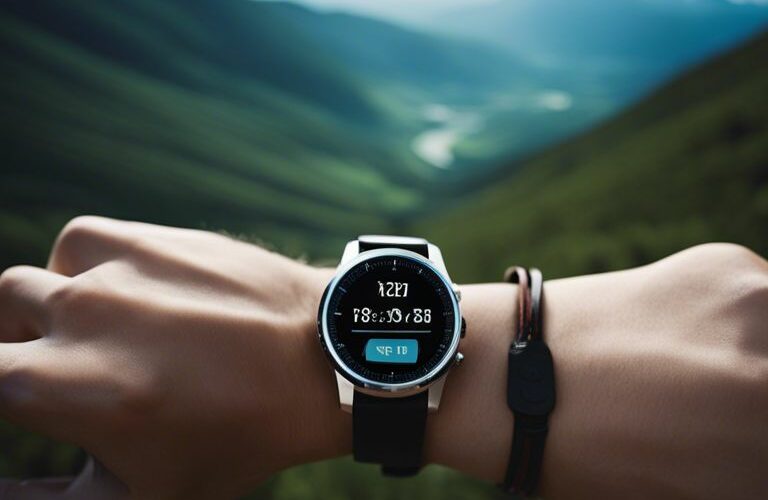
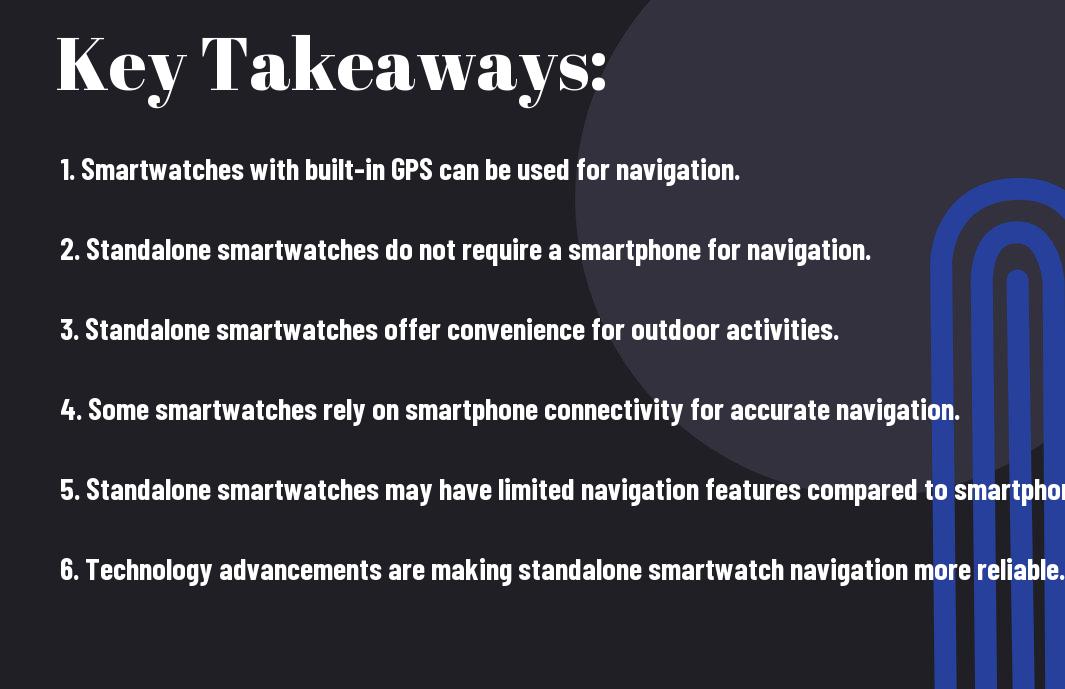
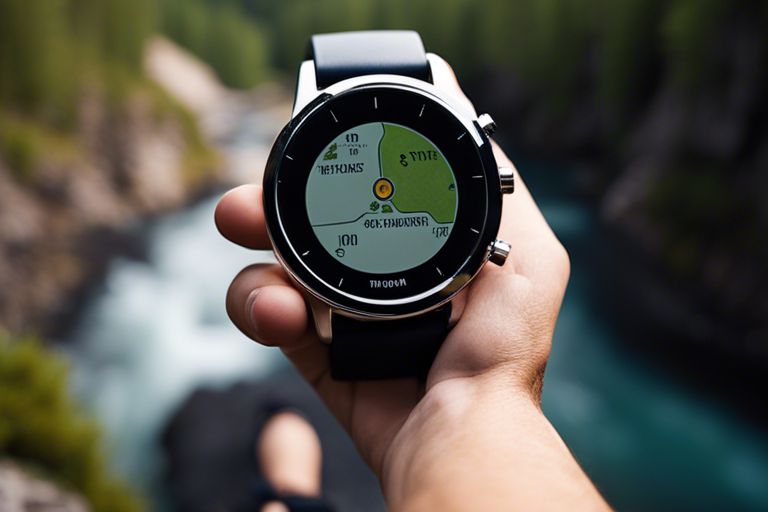
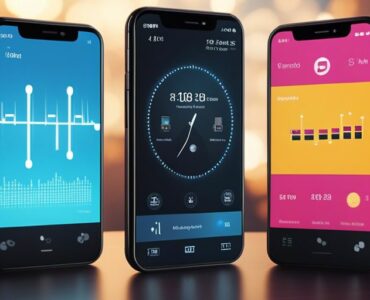
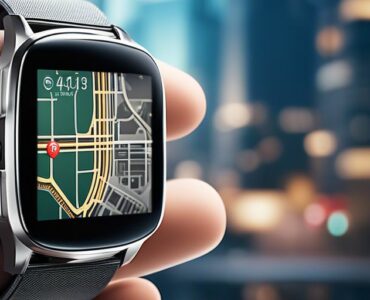
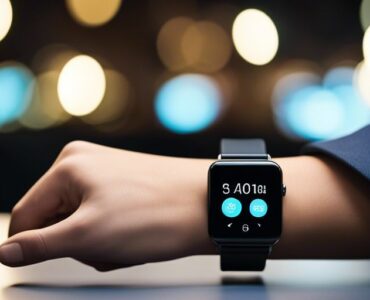





Add comment